For longer than humankind has had words to complain about it, rain has been drenching us. Trees and caves provided adequate shelter for our ancestors. Over time they even built roofs to protect their heads from the soaking assaults of the heavens. Still, finding shelter from the rain meant you were stuck in one place until it relented. That is until some clever fellow had the idea of putting a roof on a stick and carrying it with him! With this new umbrella technology, people could roam wherever they pleased, safe in the knowledge that they would not be drenched.
Umbrellas have long been a feature in the daily life of Japan, and in its mirror, Japanese art. Let's take a stroll together down the puddle-strewn alleys of umbrella history. Mi kasa es su kasa (mega bonus bilingual pun points).
From Paper to Plastic
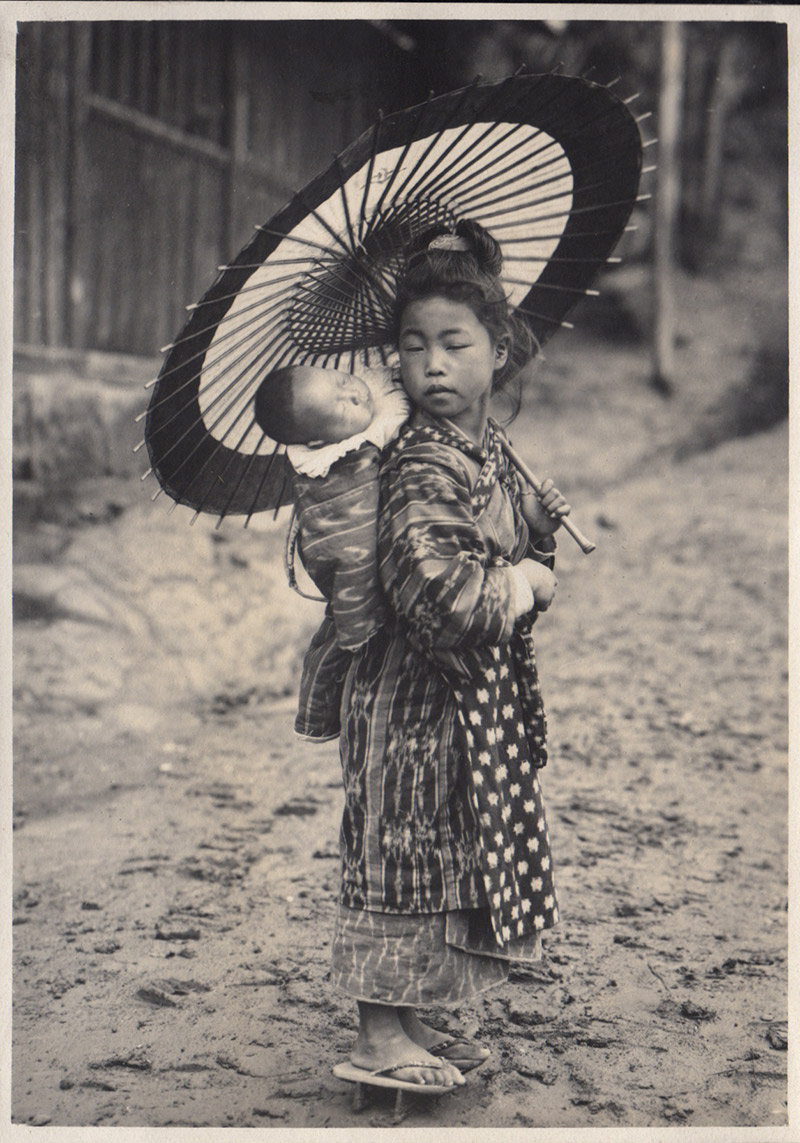
Oil-paper umbrellas were a variety invented in China which spread to many neighboring countries. No one knows exactly when umbrellas were invented, but it's thought they came to Japan via Korea during the Asuka period (538-710).
At first umbrellas were such a luxury item that they also had spiritual significance. But over the centuries some changes were made, and by the Edo period umbrellas were much more common. Still, a lot of craft went into making umbrellas.
During the Edo period (1603-1868), if you were a samurai short on dough, making umbrellas at home and selling them was an acceptable way to make extra cash. Umbrellas also became a common feature of visual and performing arts (more on that later).
From the Meiji period onward, and particularly after World War II, traditional umbrellas were eclipsed by Western style ones. Post WWII, the plastic tablecloths used by occupation forces inspired the founders of the White Rose company, who created the world's first plastic umbrella. They took a while to catch on, but catch on they did. This trend continued to the point that 500 yen plastic convenience store umbrella are found all over Japan.
Today most of these are made in China, and White Rose is the only Japanese company still making plastic umbrellas. There are now very few artisans making traditional umbrellas, mostly in Kyoto, Yodoe, and Gifu Prefecture.
An Umbrella for Every Occasion
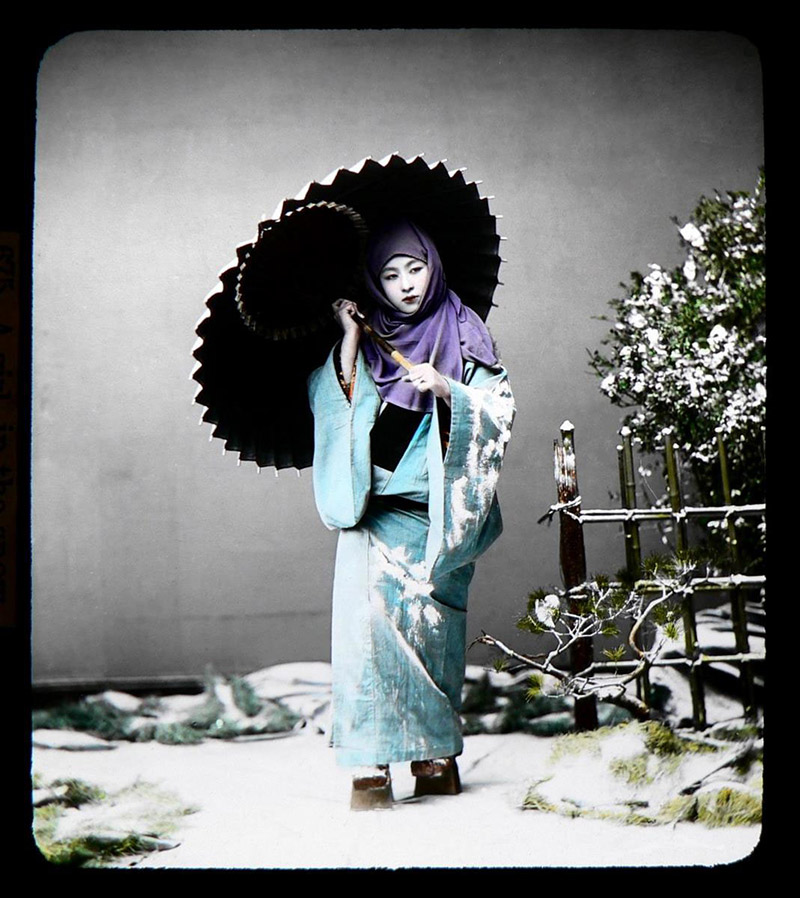
The Japanese word for umbrellas is kasa 傘. The kanji has four of the kanji for person hito 人 under what one can imagine to be an umbrella. Isn't that cute? The word for the traditional paper umbrellas is wagasa 和傘, or "Japanese umbrella." However, there are several types.
- Bangasa 番傘 are bigger heavier umbrellas, typically used by men.
- Higasa 日傘, or "sun umbrellas" are not oiled and only used for shade.
- Honshiki nodategasa 本式野点傘 are large and used for outdoor events like an outdoor tea ceremony.
- Ja no me kasa 蛇の目傘, or "snake's eye umbrellas," are named for their pattern of concentric rings that we might call a bull's eye. They are often lighter, with fewer ribs, and are usually used by women.
- Maigasa 舞傘 are also light and used for dancing. In fact, maigasa may just be a name applied to higasa when they are being used for dancing. One may also hear umbrellas referred to by their place of origin, such as Kyo wagasa or Gifu wagasa.
Umbrella Tech
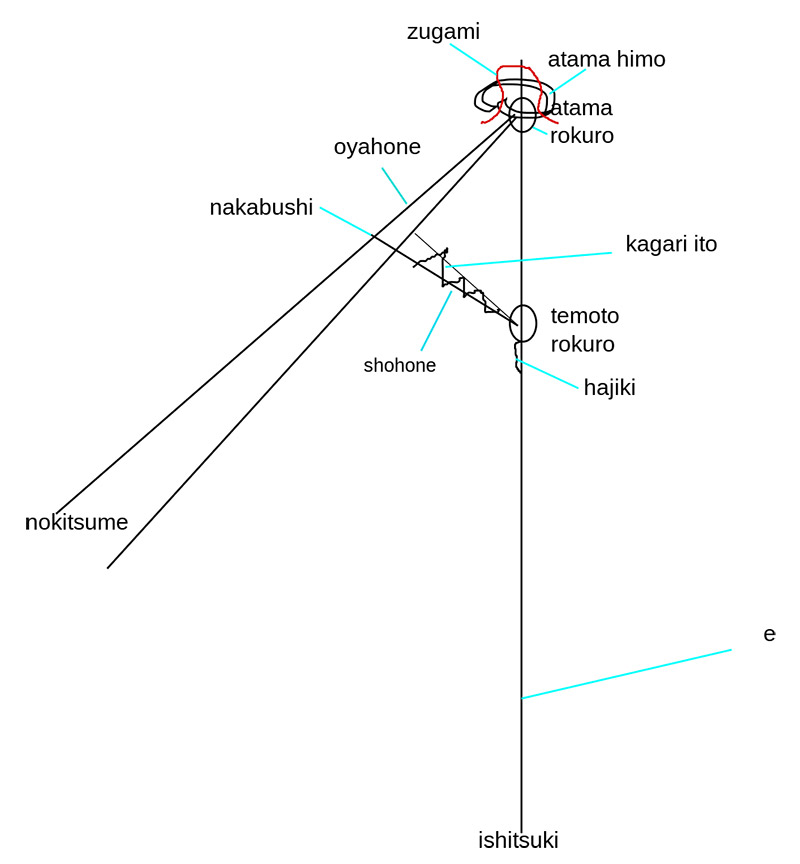
Wagasa differ from Western umbrellas in some important ways. The most obvious of these is the counterintuitive decision to make wagasa with paper, a less than water-proof material. But the paper is coated with oil, armoring them quite nicely against the rain.
Wagasa also open differently than Western umbrellas. They have 30-70 bamboo ribs which spread as the umbrella is opened, unfurling the paper (which is attached along the length of the large outer ribs) along with it. Western ones open with the tension of the metal ribs forcing the covering open, and the two are usually only attached at key points.
These differences mean that the ribs of an open wagasa remain straight, while those of a Western umbrella curve, creating a dome. Finally, closed wagasa stand handle-down, rather than handle-up like Western umbrellas.
Construction

To begin, the artisan prepares the materials. Next they attach the bamboo frame to the opening/closing structure. This means fitting the many ribs into what is essentially a wooden ring with notches cut into it, and then threading all the ribs together at that base. Then a large piece of washi (traditional paper) is cut and glued to the ribs.
After drying, the paper is colored and decorated before being coated with linseed oil for waterproofing. It must then dry again for a few days or a couple weeks. Finally, a few other parts or decoration are attached.
Umbrellas in Japanese Culture
Theater
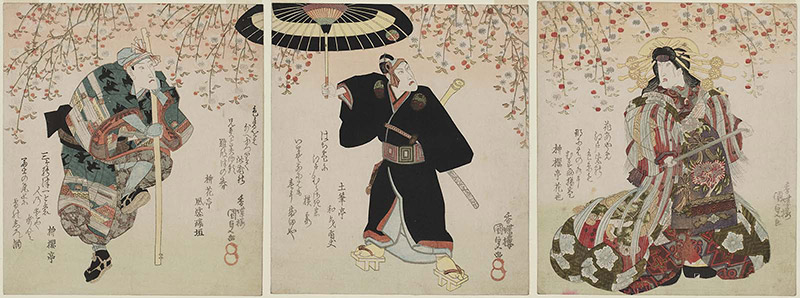
In the kabuki play "Sukeroku," which premiered in 1713, the titular character sports unique makeup, a purple headband, and ja no me umbrella. A bit of a playboy, he uses it for keeping his hair stylish while traversing the streets of Yoshiwara.
There are quite a few umbrella dances, some of which are featured in kabuki plays, or are inspired by said kabuki dances. Other umbrella dances can be seen at some festivals. For example, in Tottori you can see an umbrella dance every August. Coinciding with O-Bon, the Shan Shan Matsuri features a parade of dancers with rainbow umbrellas. Apparently it began as a way to pray for rain. Last year they made the Guinness Book of World Records for "Largest Umbrella Dance," with 1,688 participants.
Stories
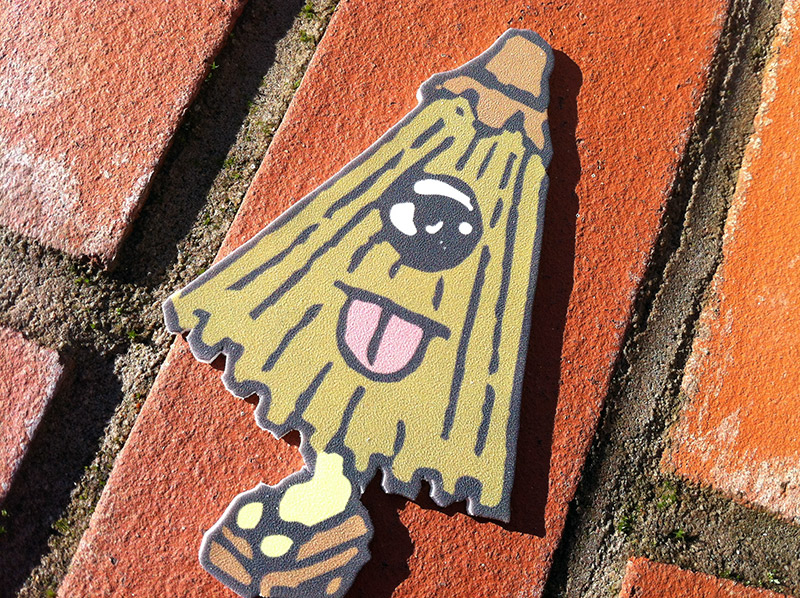
Wagasa are finely crafted, beautifully decorated tools. If taken care of they could last decades. But when an umbrella survives for a hundred years it might become something…else.
Sprouting two arms and a single eye and leg, an umbrella can become a kasa obake or karakasa kozo. These are examples of tsukumogami: objects of daily life that have reached a great age and become animated. Kasa obake are not particularly harmful, but a little mischievous, and may give you a lick.
It also has a lesser known cousin, the hone karakasa or "bone umbrella." It is a tattered umbrella that takes to the sky on wet, windy days. It is an omen of bad weather.
Art
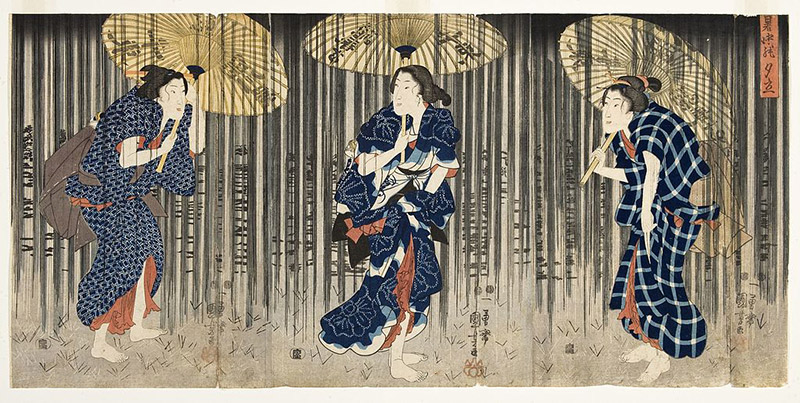
Being a common feature of everyday life, and an aesthetically pleasing one at that, umbrellas can be seen in many woodblock prints. Whether in the hands of actors, geisha, or ordinary townsfolk, there are a lot of ukiyo-e featuring umbrellas. Here's a few:
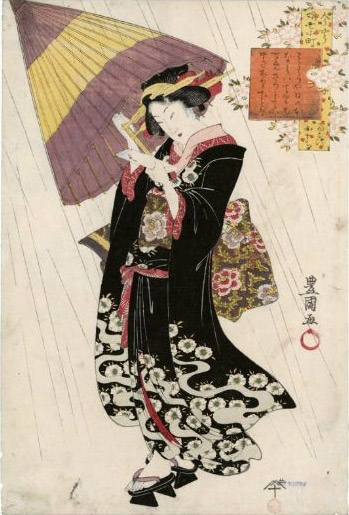
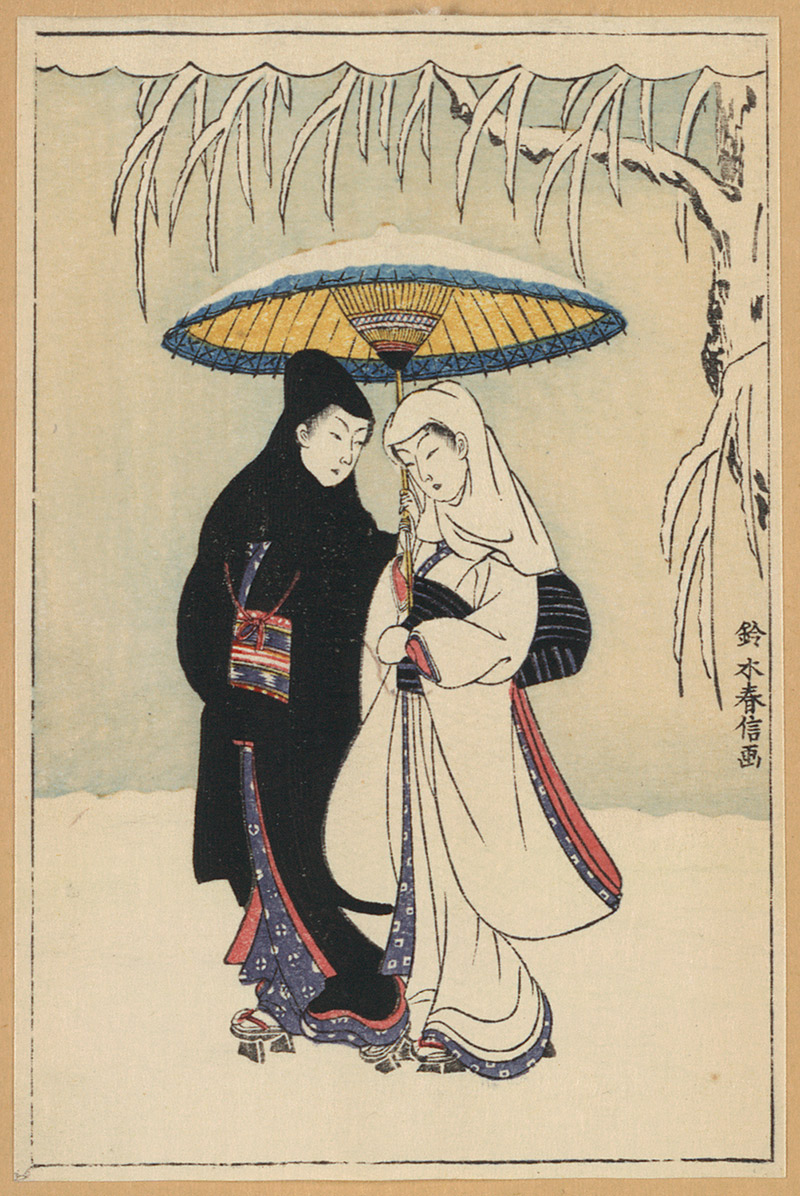
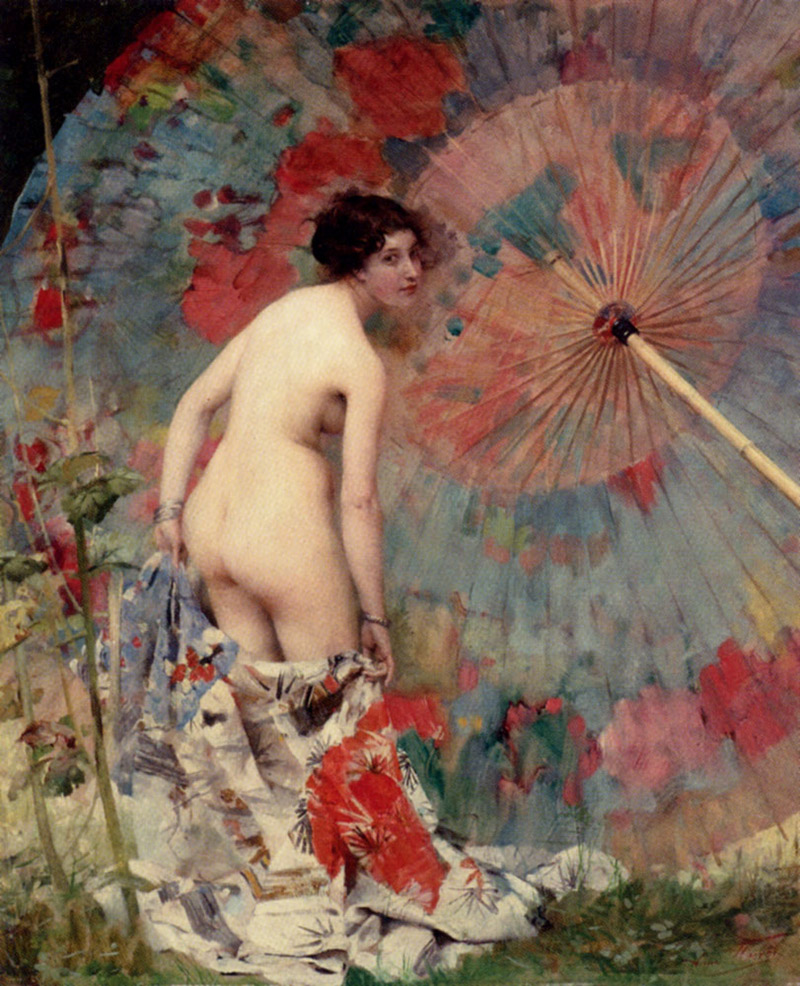
Japanese umbrellas even found their way into the paintings of Western artists, like this one by Aimé Morot (1850-1913).
Modern Culture
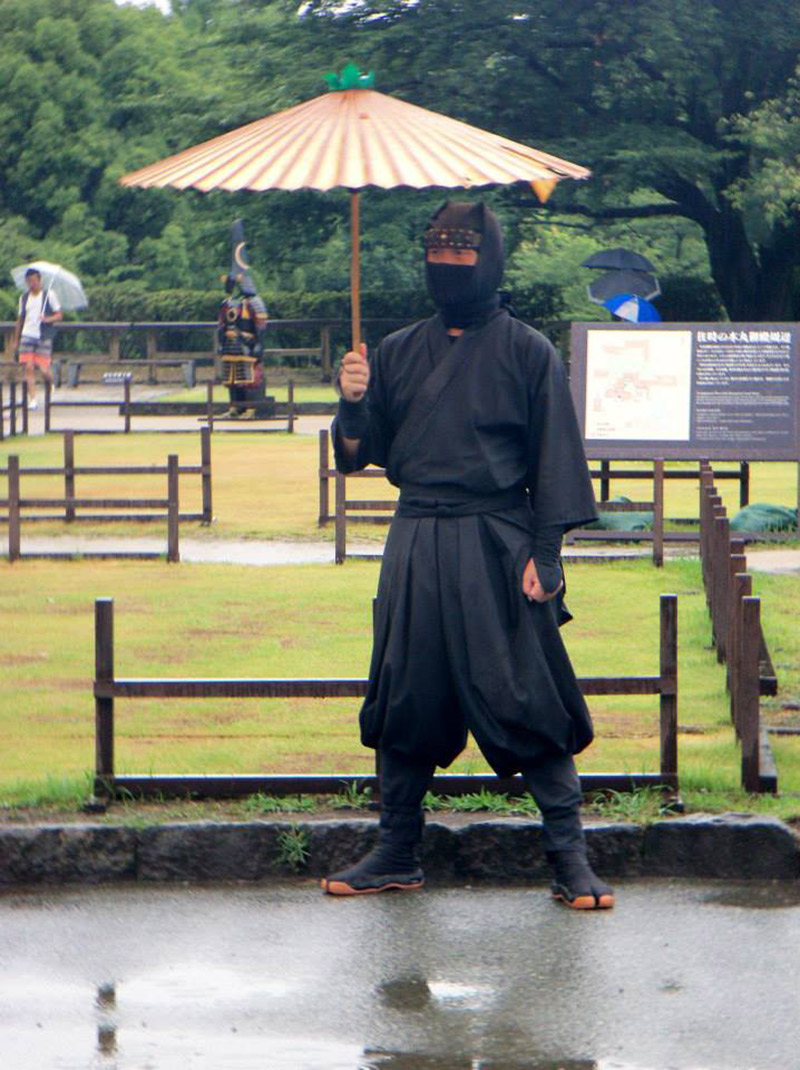
Just the gentle pitter patter of the rain on my umbrella is enough to make me smile. But perhaps you're looking for more.
How about a ninja in the rain? I saw this guy at Kumamoto Castle, and also picked up my own katana shaped umbrella, complete with samurai family crests.
Not enough, you say? Then I give you the UnBrella, invented by Hiroshi Kajimoto. The inside opens to become the outside, keeping your pants or whatever dry when it's closed. It also stands on its own.
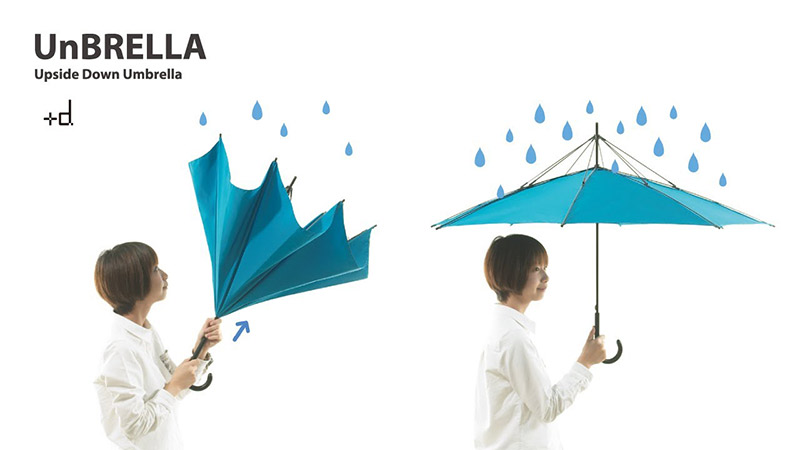
Still not enough? Last October, OK Go released the video for their song, "I Won't Let You Down," filmed in Japan with hundreds of umbrella wielding extras. I don't know if the band members were aware of Japan's umbrella history, though they are on record as being inspired by Singin' In the Rain and the now-famous Robot Restaurant. Filmed in one take, it still took four days to get it right, partly because of rain. Even though the humans had plenty of umbrellas, the weather postponed their use of personal mobility units and drones.
If that doesn't brighten your rainy day, then you're just a wet blanket.
